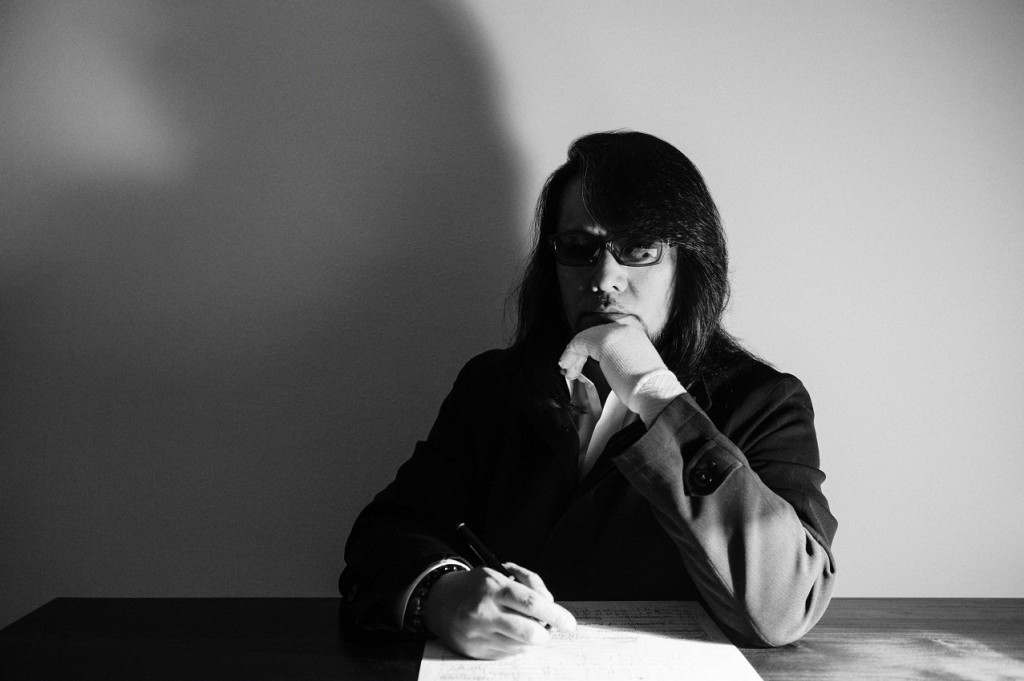The Japan Times has recently reported that disgraced Japanese composer, Mamoru Samuragochi has made his first official appearance since it was revealed that he had hired another composer to secretly write his works for him, and that we wasn’t actually deaf.
Appearing almost unrecognizable without his characteristic dark sunglasses and long black hair, Mr. Samuragochi officially acknowledged that he had secretly collaborated with Takashi Niigaki, a part-time lecturer at the Toho Gakuen School of Music in Tokyo, on the composition of nearly all of his works over the past 18 years, including his popular first symphony and Sonatina for Violin.
During the Tokyo press conference, Samuragochi apologized repeatedly, and confessed that he “will speak the truth,” and that this announcement will mark his last public appearance.
Japan Times also reported:
Samuragochi also slammed Niigaki’s claim that he never felt Samuragochi was deaf, saying Niigaki’s allegations about his hearing are “all lies.”
He said he and Niigaki communicated by writing at first, but then switched to lip reading. Reading Niigaki’s lips got easier as he became used to the way Niigaki speaks, Samuragochi said.
“I will sue Niigaki for defamation,” he said.
Proving that there is no such thing as bad publicity, his record label announced that the sales of his music have skyrocketed since the story broke.
Mr. Samuragochi’s fiction began to unravel when a reporter from the Japanese magazine Aera, came to Samuragochi’s house to interview him. During the interview the doorbell rang, and Samuragochi stood up to answer the door.
The second inkling came when composer Takeo Noguchi noticed that Samuragochi’s famous first “Hiroshima” symphony included parts adapted from composers like Bach, Mozart and Mahler.
“Here’s a man who said he goes deep inside himself to pull out what he calls ‘authentic music,’ but then you hear all these references to the greats – it just didn’t match up,” Mr. Noguchi said.
Noguchi gave voice to his suspicions in an article published in Shincho 45 – “Is the ‘Deaf Genius Composer’ Mamoru Samuragochi Really Real?” Once published, Takashi Niigaki, saw the article, and decided to break his silence by going on record admitting that he was the one who actually wrote most of Samuragochi’s work.
Samuragochi, said over the past three years his hearing has partly returned, and denied that he ever alluded that he was as deaf. He said he still had hearing problems and needed a sign language interpreter during media interviews.
+++
Commentary:
Though this story broke over a month ago, it begs a few questions as to the contemporary model of authorship. Anne Midgette notes in an article published in the Washington Post, that ghostwriting has been a fairly common practice in other disciplines such as visual arts. Jeff Koons and Ai Weiwei, both regularly farm out teams of people to materialize their ideas. Also, Paul McCartney hired composer Carl Davis to formulate and orchestrate his Liverpool Oratorio. Rufus Wainwright’s opera Prima Donna also lists composer Bryan Senti as “orchestration consultant.”
The difference seems to be that Samuragoshi was not forthright about it from the start, which leads to the uproar in the first place.
I wonder what would have happened if Takashi Niigaki had originally released the music in his own name to begin with? Would anyone have noticed it without the dramatic cache of someone like Mr. Samuragochi?
Michael Vincent
- THE SCOOP | Royal Conservatory’s Dr. Peter Simon Awarded The Order Of Ontario - January 2, 2024
- THE SCOOP | Order of Canada Appointees Announced, Including Big Names From The Arts - December 29, 2023
- Ludwig Van Is Being Acquired By ZoomerMedia - June 12, 2023





